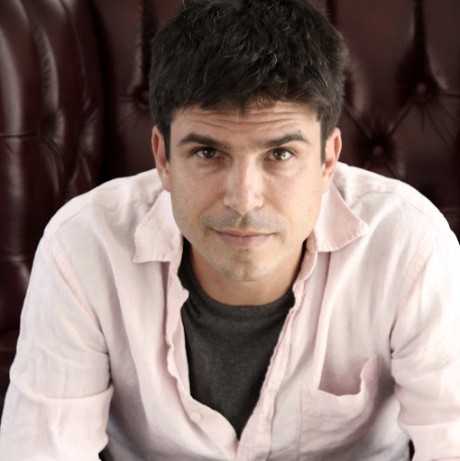In the documentary film “Pablo,” Brazilian director Richard Goldgewicht explores the life of Pablo Ferro, a movie title designer who has been working in the industry since 1964. In the last five decades, Ferro has created the title sequences for films including classics like “Dr. Strangelove,” “Midnight Cowboy” and “A Clockwork Orange.” He is also credited with more recent films such as “L.A. Confidential,” “Good Will Hunting” and “Napoleon Dynamite.”
During my interview with Goldgewicht, we talked about his inspiration behind telling Ferro’s story and about why artists like Ferro aren’t recognized as much today as they were in the 60s. Goldgewicht also discusses the moral dilemma he faced during the making of the film when he found out Ferro was almost killed in 1970 when he answered the door at his home and an unknown assailant shot him in the neck.
“Pablo” is currently available on VOD and will be released on DVD Nov. 5.
 What were the circumstances when you first met Pablo Ferro?
What were the circumstances when you first met Pablo Ferro?
I met him when I did an interview with him for a TV pilot that never aired. It was a TV show about independent cinema. The work I did with him on that project, which was a 7-minute segment, turned out so well that the producers of the show decided to show it as a short film at film festivals. I got a lot of validation in that. It was nice to see how people reacted to [Pablo].
What fascinated you about Pablo and led you to turn a 7-minute short film into a feature-length project?
I thought there was something lonely about his journey. I also wanted to explore his relationships with all these great personalities we talk to in the film (Andy Garcia, Anjelica Huston, Jonathan Demme, etc.). He was a man who was seeking recognition because there were no residuals for the work he did. He was broke and a little resentful, but he was also open and a free spirit. There were elements of his story that were contradictory in nature, but that’s what made him a very interesting character. He’s like a character from a Woody Allen film. I mean, he’s this ubiquitous artist that has been in the industry for nearly 50 years and done everything!
How did you pitch the idea to Pablo about making a documentary on him? Was he interested right away?
That part was easy. He had been compiling memorabilia throughout his life. His home looked like a museum. He was ready for a documentary. Other filmmakers had tried to do movies on him before, but none of them finished.
Why don’t movie title designers get the credit they deserve in the film industry today? Now that I’ve seen your film and know about Pablo, I can name only two: him and Saul Bass.
I think the publicity of a movie – the trailer making and things like that – have become centralized within the studios. It was a lot different when Pablo was thriving. Now, the thing Pablo was doing back then can be done on a laptop or even a cell phone. The labor has gotten minimized because of the technology. The technology has made Pablo a bit of a dinosaur. Even now, he’s still a man that is trying to learn about the computer. The computer scanner is like the invention of the wheel to him.
Who did the title sequence for “Pablo” and was that person under some major pressure since he or she had to create a title sequence for a film about someone who is considered one of the best movie title designers in the history of cinema?
I did [the title designs]. I also hired some motion design people to help out. It was all inspired by Pablo’s aesthetics. Yes, there was a sense of pressure. We wanted to do something that would encompass the breadth and depth of [Pablo’s] soul. We wanted to present him in a way that was unique.
During the making of this film, what did you learn about Pablo that you didn’t know before?
What I didn’t know is that he had gotten shot. That certainly became the crux of the film. It was the one instance that changed his life. We were trying to present part of his life that has not been very well explained in the past. I didn’t expect to find out about that [incident]. At first, we didn’t know what to do with [the information], but we did want to understand the cause and effect of his choices. It was tricky to work all that out. I was a bit of a moral decision on whether or not to use it.
We, of course, can’t deny how creative Pablo has been over the last 50 years with the work he has done in the film industry. How much of that is natural talent and how much of it was his marijuana use? I mean, in the film, it feels like many of his ideas for his designs were enhanced when he was stoned out of his mind. Do you think he could’ve created some of the things he did sober?
(Laughs) Well, Pablo’s perspective on marijuana is one of medicine. It has helped him ease the pain, especially after the gunshot. He was taking marijuana and morphine and whatever else to help his aches. He needed it to feel better. The absence of pain equals happiness for Pablo. But I’m sure [smoking] factored into his sensibility back in the 60s. He was a free spirit. I think the artist might think he needs it, but personally I don’t think so. Yeah it’s an enhancer, but I think the creativity is within him despite the marijuana.